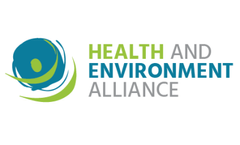Vector Borne Disease Articles & Analysis
12 news found
As several gene therapy approvals for rare disease treatment gain steam in 2023, a comprehensive set of gene therapy development solutions is released to pave richer avenues for rare disease research. This path-breaking move sees the integration of cutting-edge technology with state-of-art research facilities to amplify the possibilities of devising effective remedies for rare diseases. Rare ...
Embers, Ph.D.,* associate professor of microbiology and immunology and director of vector-borne disease research at Tulane National Primate Research Center in Covington, Louisiana. Her research at Tulane focuses on the effectiveness of antibiotics and other therapeutics to eradicate Borrelia burgdorferi from the body while also exploring the many ...
The goal of any vaccine is to generate immunity to pathogens, in order to reduce the spread of infectious diseases. A vaccine antigen (a foreign substance, usually a protein, that induces an immune response) is introduced into the body (most often via an injection), with the intention of stimulating the production of antibodies helpful in fighting off future illness. While there are a few ...
Since this list’s original publication in 2002, new vector-borne diseases have been identified and pests that had been previously thought of as benign or nuisance pests have been found to impact adversely public health. EPA, CDC, and USDA collaborated to update the list to incorporate significant changes regarding ...
Hand-washing is the first line of defense against the COVID-19 pandemic. According to Maggie Montgomery of the World Health Organization’s Office of Water, Sanitation, and Hygiene (WASH), “Fundamentally, hand hygiene is the number one means of prevention.” The WHO recommends “frequent and proper” hand-washing, but that poses difficulties when so many people worldwide ...
When buildings stand virtually abandoned due to pandemic stay-at-home orders, water stops flowing through their plumbing and bad things start to happen inside the pipes. Harmful chemicals begin to build up and potentially pathogenic microorganisms start to grow. It takes only days for dangerous concentrations to form, but many buildings will remain closed for months. How serious might the problem ...
Changes in temperature, humidity and rainfall influence vector-borne diseases such as malaria and dengue fever and water-borne diseases like diarrhea and cholera. ...
USPOULTRY and the USPOULTRY Foundation announce the completion of a funded research project at North Carolina State University in Raleigh, N.C., that evaluated a new vaccine to protect again two important diseases. The project is part of the Association’s comprehensive research program encompassing all phases of poultry and egg production and processing. A brief summary of the completed ...
The U.S. Centers for Disease Control and Prevention (CDC) estimates that in 2010, approximately 22,000 cases of Lyme disease were reported and another 8,000 more probable cases occurred nationwide. Early symptoms of Lyme disease are often similar to the flu. Borrelia burgdorferi is a species of Gram-negative bacteria and is also the cause of ...
''This data and this form of analysis should be used to improve modern modelling of environmental factors controlling vector borne disease," she said. Himanshu Thakkar, coordinator of the South Asia Network on Dams, Rivers and People, told SciDev.Net that the link between river basins and disease was known, but not studied in ...
Government delegates to the United Nations' Stockholm Convention on persistent organic pollutants (POPs) have added nine new chemicals to its list of substances that governments must control. Environmental NGOs have welcomed the move but are disappointed by the inadequacy and inconsistency of control measures approved for three the listed chemicals. Delegates at the meeting, held in Geneva in ...
Scientists analyzed 335 incidents of previous disease emergence to identify the regions where future diseases are most likely to erupt. Emerging diseases are diseases that appear in people or move into new regions for the first time. ...











